This is a guest post written by Jordan Coons. Read more about Jordan at the bottom of this page.
If you need help with serve technique, if you double fault too much, or if you simply want to improve your serve consistency & power, this lesson is for you!
Below, you are going to learn how to hit a foundationally correct serve.
We will cover the correct stance, grip, rhythm, contact point, and balance to give you a technically solid serve foundation so you can improve fast. After you learn how to serve with perfect technique, we will cover 6 keys to focus on to hit your serve with more power.
5 Keys to Better Serve Technique (Video)
Before you start adding elements like power or spin to your serve, you need to master the correct technique. This all starts with a good foundation.
This video from Tennis Beyond covers the 5 foundations to hitting a better serve with proper technique.
Tip #1: Finding The Right Serve Stance
First, let’s cover the stance. A proper stance is a big factor in having the appropriate service motion.
When you step up to the baseline, there are a few things you will want to make sure you do each time.
Turn Sideways
First, you will need to make sure that you are turned sideways to the tennis court, meaning from the baseline, if your chest is facing the net, turn 90 degrees to your dominant side.
Feet Shoulder-Width Apart
Second is your stance. To accomplish this, make sure that your feet are about shoulder-width apart, and your non-dominant foot (left for a right-handed player) will be at a 45-degree angle towards the court.
Another way to think about it would be to face your toes towards the net post. With your dominant foot (right foot for a right-handed player), slide it back parallel to the baseline, slightly further than the left foot.
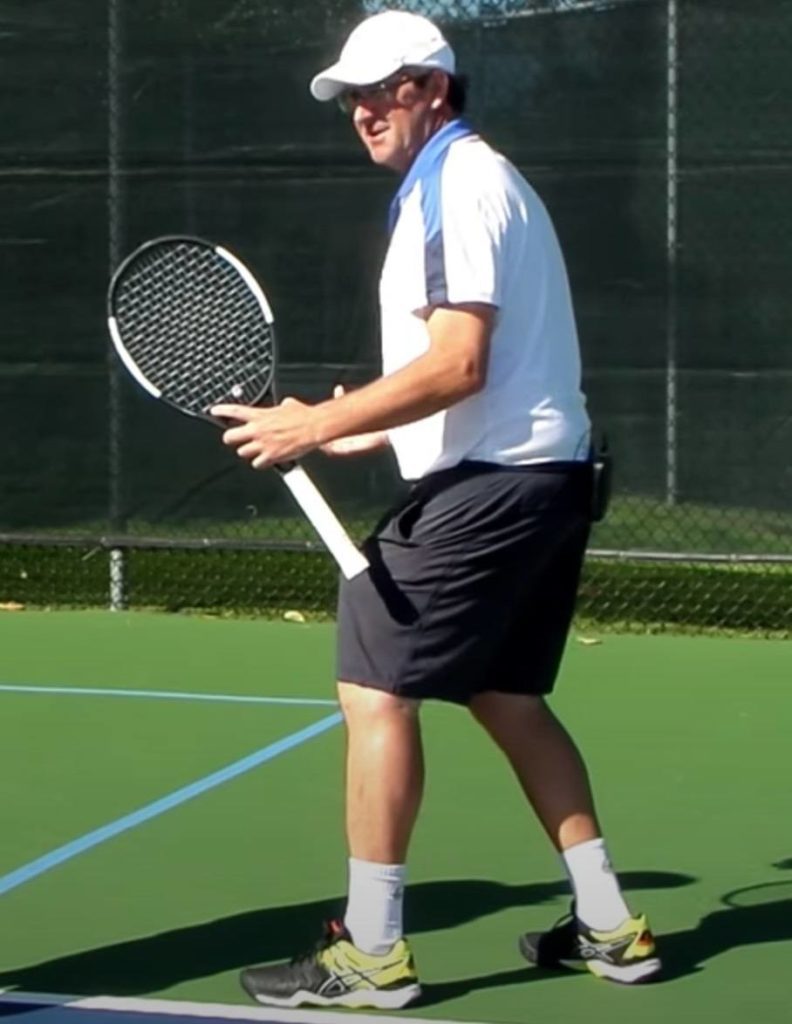
By setting up your feet in this format, it will allow for a solid base from which the serve can develop.
Skyrocket your serve strategy in doubles with this FREE 5-day course >>>
Tip #2: Use The Continental Grip
Next, we can move on to the grip. Creating a sound serve requires a player to understand and become comfortable with the continental grip. Without it, you won’t have the proper serve technique.
You will do this by holding out your dominant hand, palm facing up. There are two areas on your hand you will need to mark to hold a proper continental grip.
First, locate the knuckle at the top of your palm, near the base of the pointer finger. Make a mental mark.
Second, move towards the outer edge of the palm towards the base of the hand. Make another mental mark (see photo below).
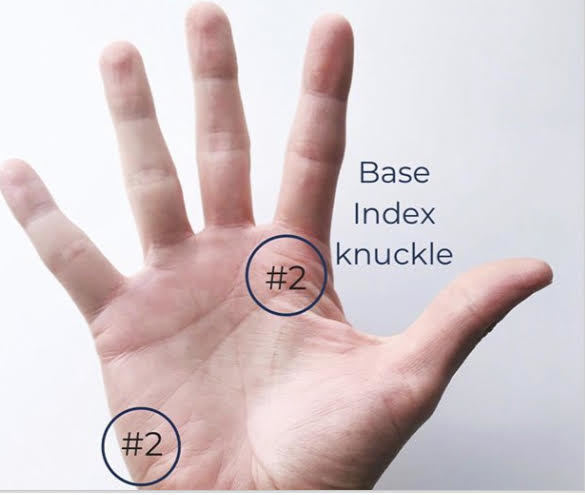
Next, you need to understand the racquet grip and the shape of it. The racquet grip, which is an octagon shape, has eight sides. If you place the racquet on its side, with the end of the grip facing you, you will be looking at the butt cap of the handle.
From here, we will put numbers on the butt cap, starting with one on the top and working our way around the handle until we reach number eight.
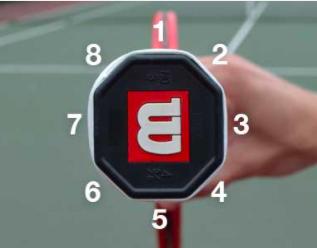
By taking the two areas of the palm we mentally marked out, and placing those two areas on the number two bevel of the racquet handle, you will be holding a continental grip. This is the same grip you should use for hitting volleys.
Tip #3: Creating Rhythm on the Serve
As you are probably gathering by now, each of these serve technique steps is equally important, and the rhythm of the service is no different. Proper rhythm allows for a smooth, quick acceleration of the tennis racquet up and through the contact point.
The rhythm is developed in many different ways, but the one way I have found that works best and easiest to feel the rhythm is by placing a tennis ball inside of a sock.
A tube sock works best, and your goal here is to have a continuous motion in a figure-eight pattern. See minute 5:52 in the video at the top of this page for an example.
To do this, you will need to bring your hands together around your stomach area. From this point, you will swing both arms down together and up together. Think of it like you are making a snow angel.
From this point, you will accelerate the tennis ball in the sock up over your head through what would be the contact point and finally decelerating into the finish.
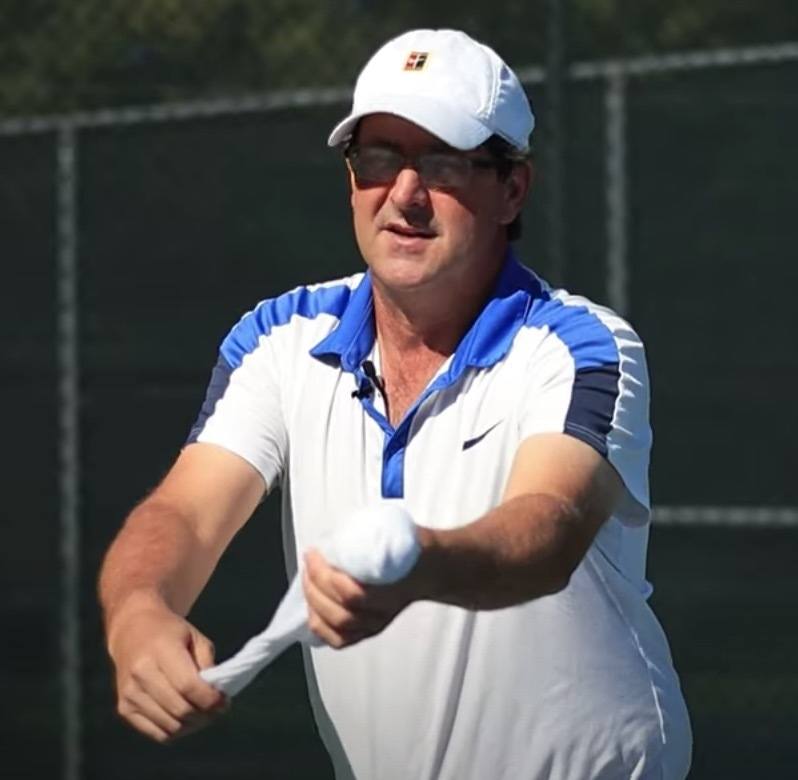
But wait, that’s not it.
Your goal is to keep the sock ball in continuous service motion swinging back into the starting position and repeat.

This 55-page Ebook includes EVERYTHING you need to know
Serve Tactics Guaranteed to Make Holding Serve Easy
Learn to hide your weaknesses, force return errors, and create game plans with your doubles partner to hold serve more often.
Tip #4: The Contact Point
Having a reliable contact point during your service motion is paramount. How do we ensure our contact point is in the proper spot?
To find the right contact point, you need to freeze that point. Here is what I mean.
Each time you hit your serve, I want you to try to freeze the racquet at the moment of impact with the ball, being completely still.
Focus on the racquet being frozen up high in front of your lead foot (left for a right-handed player), reaching slightly into the court, as well as inline with the front of your right shoulder.
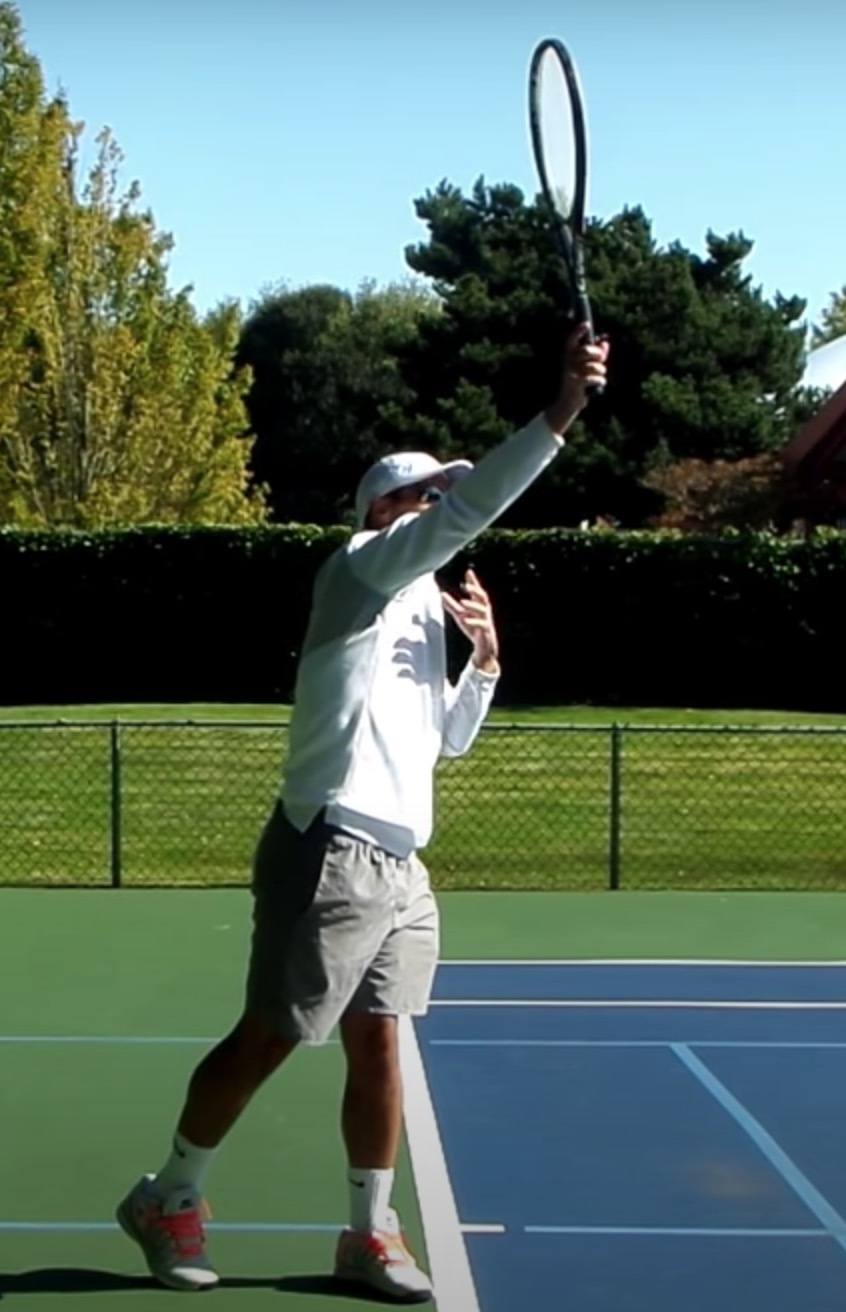
Freezing the racquet like this is a simple way to see where you are making contact with the ball. Then, you can improve that contact point as needed.
This is for basic serve technique with some spin on the ball. There are situations that this location for the contact point would not be ideal such as a kick serve. In general, on a standard service, the location of the contact point above is correct.
MOST POPULAR COURSE!
25 Winning Doubles Tactics
Guaranteed to help you play smarter & win more matches.
- Over 50 video doubles lessons
- 60+ ATP & WTA points analyzed
- Nearly 3 hours of strategy content
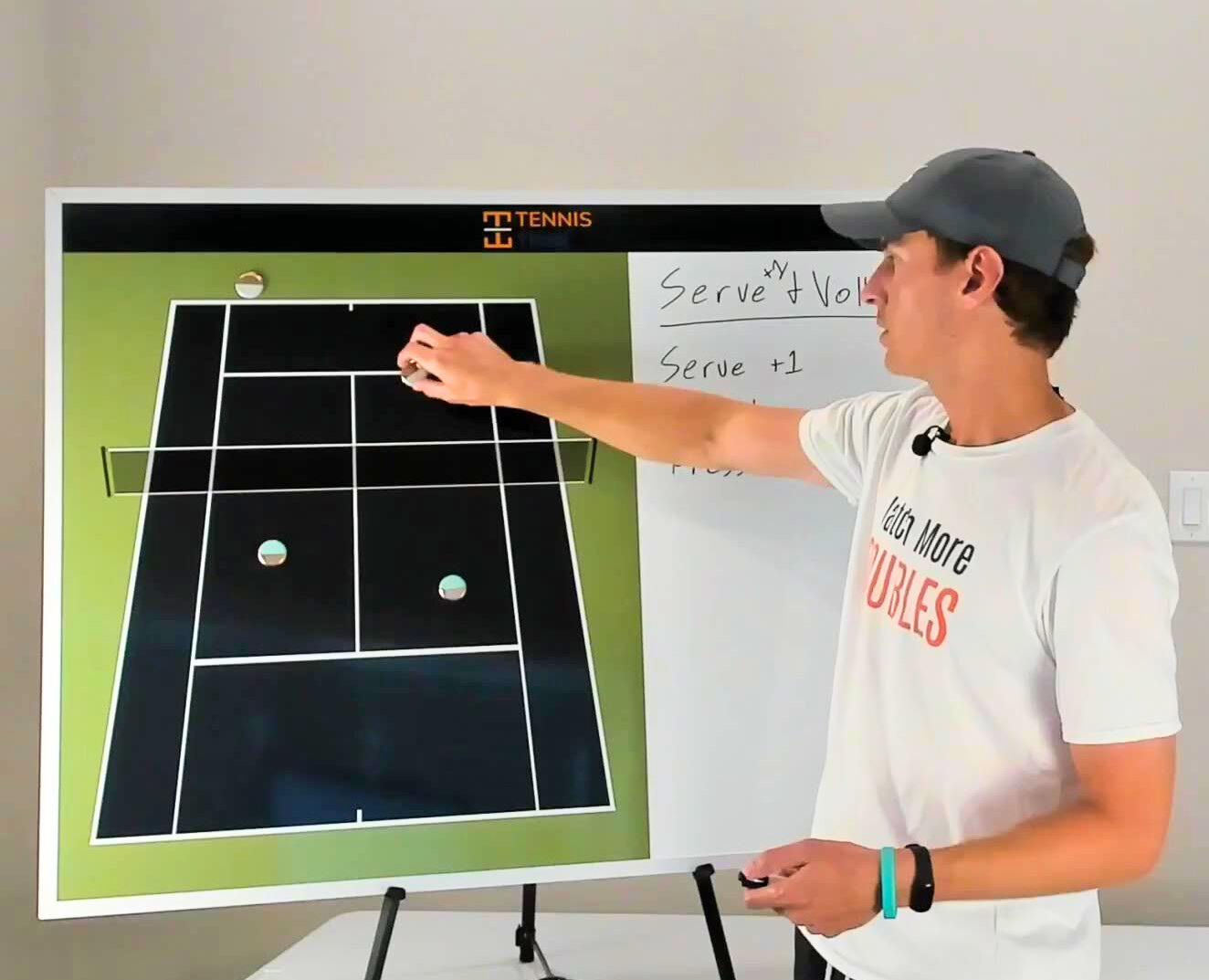
Will Boucek – Doubles Strategy Analyst for ATP & WTA Players and Team USA at the 2024 Olympics
Tip #5: Stay Balanced on Your Serve
The last and final step to an outstanding service motion is balance. There are a few simple drills you can do to ensure proper balance.
The one that we will be discussing today is holding balance upon completion of the serve.
Here’s how.
As your service motion winds down to completion, you will need to freeze your shot, only allowing your rear foot to pivot and pointing the toes towards the net.
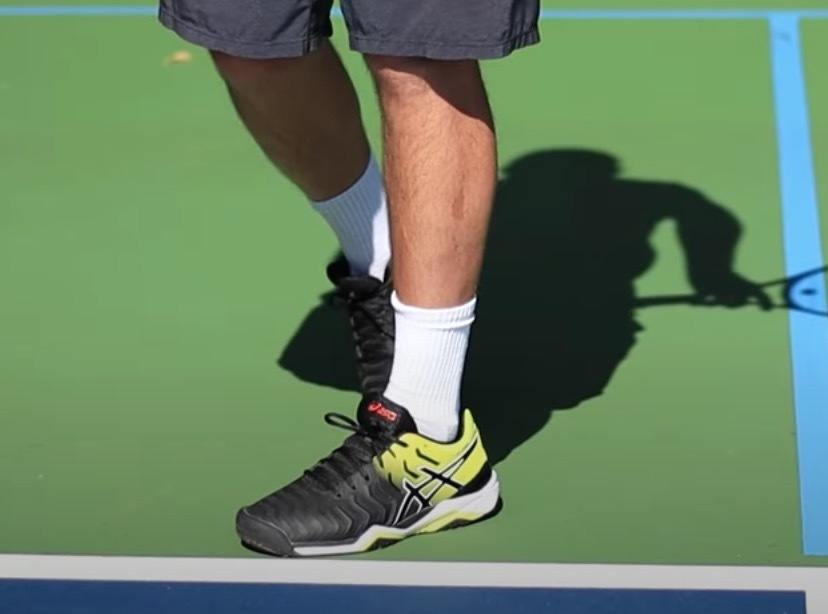
Here, you will strive to hold perfectly still until the ball your serve bounces twice.
Pay close attention to how you are staying balanced. Look for any movement or wobbling of the feet. Repeat this idea until you are completely stable, perfecting your balance with each serve.
Bonus Tip #6: Technique to Add Power to Your Serve
Everyone wants more power on their serve. Below you can learn the technical elements that lead to a faster, more powerful serve.
Here are the 6 key (technique) elements for a faster serve.
- Create a Deep Leg Bend
- The Shoulder Coil
- Loose Grip & Arm
- Correct Toss
- Exhaling
- The Leg Kick
Practice to Keep Improving Your Serve Technique
Now it is time to hit the practice court!
You have prepared yourself to create a foundationally sound service motion. Starting with excellent serve technique will allow you to easily build your serve into a weapon by continuing to improve consistency, power, and spin.
This was a guest post by Jordan Coons.
Jordan Coons is the founder Tennis Beyond and a certified United States Professional Tennis Association teaching professional. He holds an Elite designation, the highest tested level achievable within the organization. He is also a certified USPTA Tester, where tennis professionals go through rigorous testing with him to gain their teaching credentials. Jordan is a published author in tennis improvement and has 20 years of tennis teaching excellence.

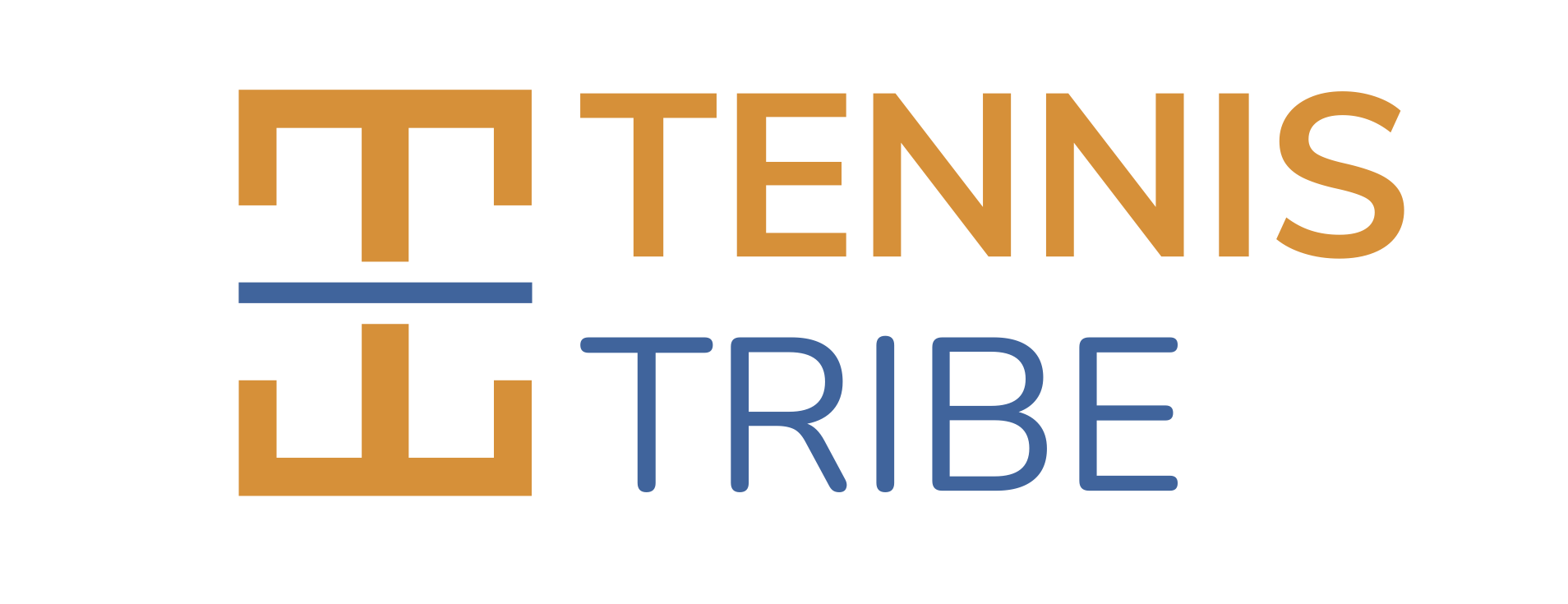
Enjoyed the video. For Tip #2, if you’re left-handed, I assume you are gripping bevel #8 to get the correct Continental Grip.
Yes you are correct